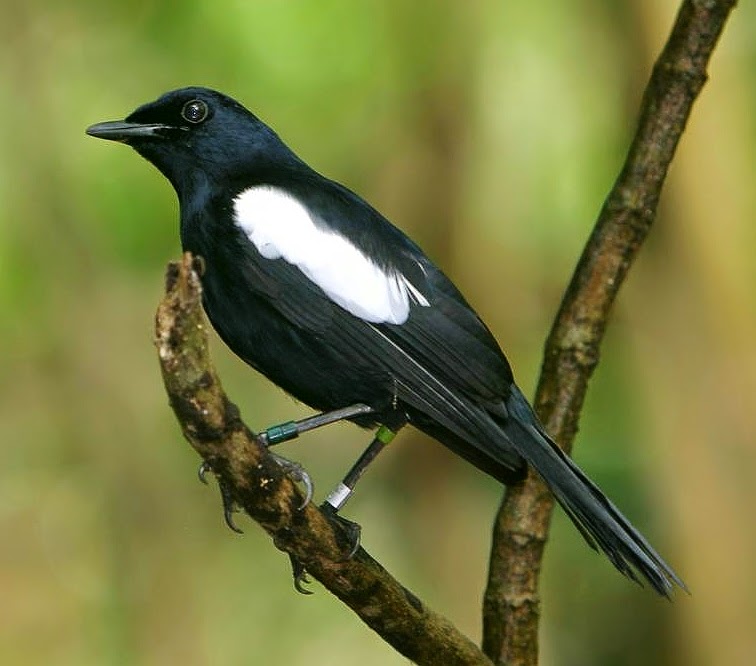 |
| Photo by Philip Perry (Internet Bird Collection) |
Common name:
Seychelles magpie-robin (en); pisco-das-Seychelles (pt); shama de Seychelles (fr); shama de Seychelles (es); Seychellendajal (de)
Taxonomy:
Order Passeriformes
Family Muscicapidae
Range:
This species is endemic to the Seychelles archipelago and was originally present in at least 8 islands, but by the 1960s it became restricted to the island of Frégate. Since then the species has been reintroduced to the islands of Aride, Cousin, Cousine and Denis.
Size:
These birds are 18-25 cm long and weigh 60-80 g.
Habitat:
The Seychelles magpie-robin was originally found in mature coastal rainforest but today uses mature woodlands on central plateaus, plantations and vegetable gardens. They prefer areas with a tall, closed canopy with sparse understorey and ground vegetation but abundant leaf litter.
Diet:
They forage on the ground, among the forest leaf litter, mainly taking soil invertebrates, particularly cockroaches but also other insects, worms, centipedes and millipedes. They also take fruits, fish dropped by tree-nesting terns, skinks and geckos, eggs and human food scraps.
Breeding:
These birds can breed all year round, especially in periods with higher rainfall. The female builds the nest alone, consisting of a simple cup made of dry grasses and coconut fibres, placed in the crown of a coconut tree or on a hole in a large tree. The female lays a single eggs which she incubates alone for 17-22 days while the male guards the nest from predators. The chick is fed by both parents and fledges 18-20 days after hatching, becoming fully independent about 11 weeks later. They reach sexual maturity at 1 years of age and each pair raises a single chick per year.
Conservation:
IUCN status – EN (Endangered)
This species has an extremely small breeding range and the global population is estimated at just 120 individuals. By 1965 only 12-15 Seychelles magpie-robins survived on the island of Frégate having declined mainly due to predation by introduced cats and, to a lesser extent, predation by introduced rats and habitat destruction. Cats were eradicated from Frégate in the 1980s and since the 1990s individuals have been translocated to several predator-free islands, leading to a small recovery in numbers. Further threats include changes in agricultural practices and introduction of exotic plants, as well as future sea level rise.







